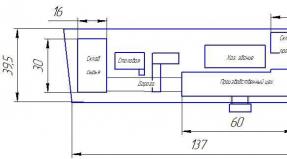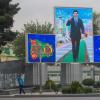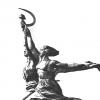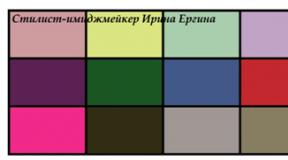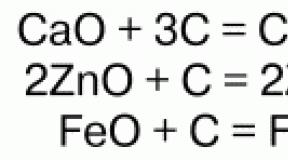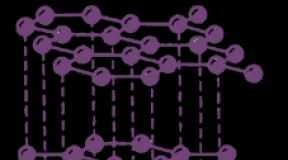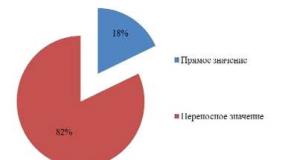Chronic pain syndrome. Pain syndrome Causes of the development of pathology
By its biological origin, pain is a signal of danger and trouble in the body, and in medical practice such pain is often considered as a symptom of a disease that occurs when tissues are damaged due to trauma, inflammation or ischemia. The formation of pain sensation is mediated by the structures of the nociceptive system. Without the normal functioning of the systems that provide the perception of pain, the existence of man and animals is impossible. The sensation of pain forms a whole complex of protective reactions aimed at eliminating damage.
Pain is the most frequent and subjectively complex complaint of patients. It causes suffering to many millions of people around the world, significantly worsening the conditions of human existence. To date, it has been proven that the nature, duration and intensity of pain sensations depend not only on the damage itself, but are also largely determined by adverse life situations, social and economic problems. Within the framework of the biopsychosocial model, pain is considered as the result of a two-way dynamic interaction of biological (neurophysiological), psychological, social, religious and other factors. The result of this interaction will be the individual nature of the pain sensation and the form of the patient's response to pain. According to this model, behavior, emotions, and even simple physiological reactions change depending on the person's attitude to the events. Pain is the result of simultaneous dynamic processing of impulses from nociceptors and a large number of other incoming exteroceptive (auditory, visual, olfactory) and interoceptive (visceral) signals. Therefore, pain is always subjective and each person experiences it in his own way. The same irritation can be perceived by our consciousness in different ways. The perception of pain depends not only on the place and nature of the injury, but also on the conditions or circumstances under which the injury occurred, on the psychological state of a person, his individual life experience, culture, and national traditions.
Psychological and social problems can have a significant impact on a person's experience of pain. In these cases, the strength and duration of pain may exceed its signaling function and may not correspond to the degree of damage. Such pain becomes pathological. Pathological pain (pain syndrome), depending on the duration, is divided into acute and chronic pain. Acute pain is new, recent pain that is inextricably linked to the injury that caused it, and is usually a symptom of some disease. Acute pain usually disappears when the damage is repaired. The treatment of such pain is usually symptomatic, and, depending on its intensity, either non-narcotic or narcotic analgesics are used. The course of pain in the form of a symptom accompanying the underlying disease is favorable. When the function of damaged tissues is restored, pain symptoms also disappear. However, in some patients, the duration of pain may exceed the duration of the underlying disease. In these cases, pain becomes the leading pathogenic factor, causing serious impairment of many body functions and reducing the life expectancy of patients. According to the European epidemiological study, the incidence of chronic non-oncological pain syndromes in Western Europe is about 20%, that is, every fifth European adult suffers from chronic pain syndrome.
Among chronic pain syndromes, the most common are pain in diseases of the joints, back pain, headaches, musculoskeletal pain, neuropathic pain. Doctors are faced with a situation in which the identification and elimination of damage is not accompanied by the disappearance of pain. In conditions of chronic pain syndrome, as a rule, there is no direct connection with organic pathology, or this connection is unclear, indefinite. Chronic pain is defined by the International Association for the Study of Pain as pain lasting more than three months and lasting beyond the normal tissue healing period. Chronic pain began to be considered not as a symptom of any disease, but as an independent disease that requires special attention and complex etiopathogenetic treatment. The problem of chronic pain due to the high prevalence and variety of forms is so important and significant that in many countries specialized pain centers and clinics have been created to treat patients with pain syndromes.
What underlies chronic pain and why is chronic pain resistant to the action of classical analgesics? The search for answers to these questions is of extreme interest to researchers and physicians and largely determines the current trends in the study of the problem of pain.
All pain syndromes, depending on the etiopathogenesis, can be divided into three main groups: nociceptive, neuropathic and psychogenic (pains of a psychological nature). In real life, these pathophysiological variants of pain syndromes often coexist.
Nociceptive pain syndromes
Nociceptive pain is considered to be pain arising from tissue damage followed by activation of nociceptors - free nerve endings that are activated by various damaging stimuli. An example of such pain is postoperative pain, pain in trauma, angina pectoris in patients with coronary heart disease, epigastric pain in gastric ulcer, pain in patients with arthritis and myositis. In the clinical picture of nociceptive pain syndromes, zones of primary and secondary hyperalgesia (areas with increased pain sensitivity) are always found.
Primary hyperalgesia develops in the area of tissue damage, the zone of secondary hyperalgesia extends to healthy (intact) parts of the body. The development of primary hyperalgesia is based on the phenomenon of nociceptor sensitization (increased sensitivity of nociceptors to the action of damaging stimuli). Sensitization of nociceptors occurs due to the action of substances that have a pro-inflammatory effect (prostaglandins, cytokines, biogenic amines, neurokinins, etc.) and come from the blood plasma, released from damaged tissue, and also secreted from the peripheral terminals of C-nociceptors. These chemical compounds, interacting with the corresponding receptors located on the membrane of nociceptors, make the nerve fiber more excitable and more sensitive to external stimuli. The presented mechanisms of sensitization are characteristic of all types of nociceptors localized in any tissue, and the development of primary hyperalgesia is noted not only in the skin, but also in muscles, joints, bones and internal organs.
Secondary hyperalgesia occurs as a result of central sensitization (increased excitability of nociceptive neurons in the structures of the central nervous system). The pathophysiological basis of sensitization of central nociceptive neurons is the long-term depolarizing effect of glutamate and neurokinins released from the central terminals of nociceptive afferents due to intense constant impulses coming from the zone of damaged tissues. The resulting increased excitability of nociceptive neurons can persist for a long time, contributing to the expansion of the area of hyperalgesia and its spread to healthy tissues. The severity and duration of sensitization of peripheral and central nociceptive neurons directly depend on the nature of tissue damage, and in the case of tissue healing, the phenomenon of peripheral and central sensitization disappears. In other words, nociceptive pain is a symptom that occurs when tissue is damaged.
neuropathic pain syndromes
Neuropathic pain is defined by experts from the International Association for the Study of Pain as the result of primary damage or dysfunction of the nervous system, however, at the 2nd International Congress on Neuropathic Pain (2007), changes were made to the definition. According to the new definition, neuropathic pain refers to pain resulting from direct damage or disease of the somatosensory system. Clinically, neuropathic pain is manifested by a combination of negative and positive symptoms in the form of partial or complete loss of sensitivity (including pain) with the simultaneous occurrence of unpleasant, often pronounced pain in the affected area in the form of allodynia, hyperalgesia, dysesthesia, hyperpathia. Neuropathic pain can occur both with damage to the peripheral nervous system and the central structures of the somatosensory analyzer.
The pathophysiological basis of neuropathic pain syndromes are disorders in the mechanisms of generation and conduction of a nociceptive signal in nerve fibers and in the processes of controlling the excitability of nociceptive neurons in the structures of the spinal cord and brain. Damage to the nerves leads to structural and functional transformations in the nerve fiber: the number of sodium channels on the nerve fiber membrane increases, new atypical receptors and zones of generation of ectopic impulses appear, mechanosensitivity occurs, and conditions are created for cross-excitation of neurons of the dorsal ganglion. All of the above forms an inadequate response of the nerve fiber to irritation, contributing to a significant change in the pattern of the transmitted signal. Increased impulses from the periphery disrupt the work of the central structures: sensitization of nociceptive neurons occurs, the death of inhibitory interneurons, neuroplastic processes are initiated, leading to new interneuronal contacts of tactile and nociceptive afferents, and the efficiency of synaptic transmission increases. Under these conditions, the formation of pain is facilitated.
However, damage to the peripheral and central structures of the somatosensory system, in our opinion, cannot be considered as a direct independent cause of neuropathic pain, but is only a predisposing factor. The basis for such reasoning is the data indicating that neuropathic pain does not always occur, even in the presence of clinically confirmed damage to the structures of the somatosensory analyzer. Thus, transection of the sciatic nerve leads to the appearance of pain behavior in only 40-70% of rats. Spinal cord injury with symptoms of hypalgesia and temperature hypesthesia is accompanied by central pain in 30% of patients. No more than 8% of patients who have had a cerebral stroke with a deficit in somatosensory sensitivity experience neuropathic pain. Postherpetic neuralgia, depending on the age of patients, develops in 27-70% of patients who have had herpes zoster.
Neuropathic pain in patients with clinically verified sensory diabetic polyneuropathy is observed in 18-35% of cases. Conversely, in 8% of cases, patients with diabetes mellitus have clinical symptoms of neuropathic pain in the absence of signs of sensory polyneuropathy. Considering also that the severity of pain symptoms and the degree of sensitivity disorders in the vast majority of patients with neuropathies are not interrelated, it can be assumed that for the development of neuropathic pain, the presence of damage to the somatosensory nervous system is not enough, but a number of conditions are required that lead to disruption of integrative processes in the field of systemic regulation of pain. sensitivity. That is why in the definition of neuropathic pain, along with an indication of the root cause (damage to the somatosensory nervous system), either the term “dysfunction” or “dysregulation” should be present, reflecting the importance of neuroplastic reactions that affect the stability of the pain sensitivity regulation system to the action of damaging factors. In other words, a number of individuals initially have a predisposition to the development of stable pathological conditions, including in the form of chronic and neuropathic pain.
This is indicated by data on the existence in rats of various genetic lines of high and low resistance to the development of neuropathic pain syndrome after transection of the sciatic nerve. In addition, the analysis of diseases comorbid with neuropathic pain also indicates the initial failure of the body's regulatory systems in these patients. In patients with neuropathic pain, the incidence of migraine, fibromyalgia, anxiety and depressive disorders is significantly higher compared to patients without neuropathic pain. In turn, in patients with migraine, the following diseases are comorbid: epilepsy, irritable bowel syndrome, gastric ulcer, bronchial asthma, allergies, anxiety and depressive disorders. Patients with fibromyalgia are more likely to suffer from hypertension, irritable bowel syndrome, osteoarthritis, anxiety and depressive disorders. The listed diseases, despite the variety of clinical symptoms, can be attributed to the so-called "diseases of regulation", the essence of which is largely determined by the dysfunction of the body's neuroimmunohumoral systems, unable to provide adequate adaptation to stress.
The study of the features of the bioelectrical activity of the brain in patients with neuropathic, chronic and idiopathic pain syndromes indicates the presence of similar changes in the background EEG rhythm, reflecting dysfunction of the cortical-subcortical relationships. The presented facts allow us to consider that for the occurrence of neuropathic pain, a dramatic combination of two main events is necessary - damage to the structures of the somatosensory nervous system and dysfunction in the cortical-subcortical relations of the brain. It is the presence of dysfunction of the brain stem structures that will largely determine the reaction of the brain to damage, contribute to the existence of a long-lasting hyperexcitability of the nociceptive system and the persistence of pain symptoms.
Psychogenic pain syndromes
Psychogenic pain syndromes according to the classification of the International Association for the Study of Pain include:
Pain provoked by emotional factors and caused by muscle tension;
Pain as a delusion or hallucination in patients with psychosis, disappearing with the treatment of the underlying disease;
Pain in hysteria and hypochondria, not having a somatic basis;
Pain associated with depression that does not precede it and does not have any other cause.
In the clinic, psychogenic pain syndromes are characterized by the presence of pain in patients that cannot be explained by any known somatic diseases or damage to the structures of the nervous system. The localization of this pain usually does not correspond to the anatomical features of the tissues or areas of innervation, the defeat of which could be suspected as the cause of the pain. There are situations in which somatic damage, including disorders of the structures of the somatosensory nervous system, can be detected, but the intensity of pain in this case greatly exceeds the degree of damage. In other words, the leading, triggering factor in the genesis of psychogenic pain is a psychological conflict, and not damage to somatic or visceral organs or structures of the somatosensory nervous system.
Identification of psychogenic pain is a rather difficult task. Psychogenic pain syndromes often occur as a somatoform pain disorder, in which pain symptoms cannot be explained by the existing somatic pathology and are not intentional. Patients prone to somatoform disorders are characterized by a history of multiple somatic complaints that appeared before the age of 30 and continued for many years. According to ICD-10, chronic somatoform pain disorder is characterized by a combination of pain with emotional conflict or psychosocial problems, therefore, it is necessary to identify a psychogenic etiological factor, which can be judged by the presence of temporary links between pain symptoms and psychological problems. For the correct diagnosis of somatoform pain disorder, it is necessary to consult a psychiatrist to differentiate this condition from depression, schizophrenia and other mental disorders, in the structure of which pain syndromes can also be noted. The concept of somatoform pain disorder was introduced into the classification of mental disorders relatively recently, and so far it causes a lot of discussion.
At the same time, it must be remembered that the occurrence of pain, including psychogenic pain, is possible only if the nociceptive system is activated. If, in the event of nociceptive or neuropathic pain, there is a direct activation of the structures of the nociceptive system (due to tissue injury or damage to the structures of the somatosensory nervous system), then in patients with psychogenic pain, indirect excitation of nociceptors is possible - either through the mechanism of retrograde activation by sympathetic efferents and / or through reflex muscle tension . Prolonged muscle tension in psychoemotional disorders is accompanied by an increase in the synthesis of algogens in muscle tissue and sensitization of nociceptor terminals localized in the muscles.
Psychological conflict is almost always also accompanied by activation of the sympathetic nervous system and the hypothalamic-pituitary-adrenal axis, which can, through alpha2-adrenergic receptors localized on the membrane of nociceptors, contribute to retrograde excitation of nociceptors and their subsequent sensitization through the mechanisms of neurogenic inflammation. Under conditions of neurogenic inflammation, neurokinins (substance P, neurokinin A, etc.) are secreted into tissues from the peripheral terminals of nociceptors, which have a pro-inflammatory effect, causing an increase in vascular permeability and the release of prostaglandins, cytokines, and biogenic amines from mast cells and leukocytes. In turn, inflammatory mediators, acting on the membrane of nociceptors, increase their excitability. The clinical manifestation of nociceptor sensitization in psychoemotional disorders will be zones of hyperalgesia, which are easily diagnosed, for example, in patients with fibromyalgia or tension headaches.
Conclusion
The presented data indicate that the pain syndrome, regardless of the etiology of its occurrence, is the result of not only functional, but also structural changes affecting the entire nociceptive system, from tissue receptors to cortical neurons. With nociceptive and psychogenic pain, functional and structural changes in the pain sensitivity system are manifested by sensitization of peripheral and central nociceptive neurons, which results in an increase in the efficiency of synaptic transmission and persistent hyperexcitability of nociceptive neurons. In patients with neuropathic pain, structural changes in the nociceptive system are more significant and include the formation of loci of ectopic activity in damaged nerves and pronounced changes in the integration of nociceptive, temperature, and tactile signals in the CNS. It should also be emphasized that the pathological processes observed in the nociceptive structures of the peripheral and central nervous systems are closely interrelated in the dynamics of the development of any pain syndrome. Damage to tissues or peripheral nerves, increasing the flow of nociceptive signals, leads to the development of central sensitization (long-term increase in the efficiency of synaptic transmission and hyperactivity of nociceptive neurons in the spinal cord and brain).
In turn, an increase in the activity of central nociceptive structures affects the excitability of nociceptors, for example, through the mechanisms of neurogenic inflammation, as a result of which a vicious circle is formed that maintains a long-lasting hyperexcitability of the nociceptive system. It is obvious that the stability of such a vicious circle and, consequently, the duration of pain will depend either on the duration of the inflammatory process in damaged tissues, providing a constant influx of nociceptive signals into the CNS structures, or on the initially existing cortical-subcortical dysfunction in the CNS, due to which central sensitization will be maintained. and retrograde activation of nociceptors. This is also indicated by the analysis of the dependence of the occurrence of prolonged pain on age. It has been proven that the appearance of chronic pain syndrome in old age is most often due to degenerative joint diseases (nociceptive pain), while idiopathic chronic pain syndromes (fibromyalgia, irritable bowel syndrome) and neuropathic pain rarely begin in old age.
Thus, in the formation of a chronic pain syndrome, the genetically determined reactivity of the body (primarily the structures of the central nervous system) is decisive, which is usually excessive, not adequate to damage, as a result of which a vicious circle arises that maintains a long-lasting hyperexcitability of the nociceptive system.
Literature
Akmaev I.?G., Grinevich V.?V. From neuroendocrinology to neuroimmunoendocrinology // Bull. experimental biol. and honey. 2001. no. 1. S. 22-32.
Bregovskiy V.?B. Painful forms of diabetic polyneuropathy of the lower extremities: modern ideas and treatment options (literature review) // Pain, 2008. No. 1. P. 2-34.
Danilov A.?B., Davydov O.?S. neuropathic pain. M.: Borges, 2007. 192 p.
Dysregulatory pathology / Ed. Academician of the Russian Academy of Medical Sciences G.? N.? Kryzhanovsky. M.: Medicine, 2002. 632 p.
Krupina N.A., Malakhova E.V., Loranskaya I.?D., Kukushkin M.?L., Kryzhanovsky G.?N. Analysis of the electrical activity of the brain in patients with dysfunctions of the gallbladder // Pain. 2005. No. 3. S. 34-41.
Krupina N.?A., Khadzegova F.?R., Maychuk E.?Yu., Kukushkin M.?L., Kryzhanovsky G.?N. Analysis of the electrical activity of the brain in patients with irritable bowel syndrome // Pain. 2008. No. 2. S. 6-12.
Kukushkin M.?L., Khitrov N.?K. General pathology of pain. Moscow: Medicine, 2004. 144 p.
Pshennikova M.?G., Smirnova V.?S., Grafova V.?N., Shimkovich M.?V., Malyshev I.?Yu., Kukushkin M.?L. Resistance to the development of neuropathic pain syndrome in August rats and Wistar populations with different innate resistance to stress // Bol. 2008. No. 2. S. 13-16.
Reshetnyak V.?K., Kukushkin M.?L. Pain: physiological and pathophysiological aspects. In: Actual problems of pathophysiology. Selected lectures (Under the editorship of B.? B.? Moroz) M .: Medicine, 2001. S. 354-389.
Abstracts of the Second International Congress on Neuropathic Pain (NeuPSIG). June 7-10, 2007. Berlin, Germany // Eur J Pain. 2007. V. 11. Suppl 1. S1-S209.
Attal N., Cruccu G., Haanpaa M., Hansson P., Jensen T.?S., Nurmikko T., Sampaio C., Sindrup S., Wiffen P. EFNS guidelines on pharmacological treatment of neuropathic pain // European Journal of Neurology. 2006. V. 13. P. 1153-1169.
Bernatsky S., Dobkin P.?L., De Civita M., Penrod J.?R. Comorbidity and physician use in fibromyalgia // Swiss Med Wkly. 2005. V. P. 135: 76-81.
Bjork M., Sand T. Quantitative EEG power and asymmetry increase 36 h before a migraine attack // Cephalalgia. 2008. No. 2. R. 212-218.
Breivik H., Collett B., Ventafridda V., Cohen R., Gallacher D. Survey of chronic pain in Europe: Prevalence, impact on daily life, and treatment // European Journal of Pain. 2006. V. 10. P. 287-333.
Classification of chronic pain: descriptions of chronic pain syndromes and definitions of pain terms/prepared by International Association for the Study of Pain, Task Force on Taxonomy; editors, H.?Merskey, N.?Bogduk. 2nd ed. Seattle: IASP Press, 1994. 222 p.
Davies M., Brophy S., Williams R., Taylor A. The Prevalence, Severity, and Impact of Painful Diabetic Peripheral Neuropathy in Type 2 Diabetes // Diabetes Care. 2006. V. 29. P. 1518-1522.
Kost R.?G., Straus S.?E. Postherpetic neuralgia-pathogenesis, treatment, and prevention // New Engl J Med. 1996. V. 335. P. 32-42.
Lia C., Carenini L., Degioz C., Bottachi E. Computerized EEG analysis in migraine patients // Ital J Neurol Sci. 1995. V. 16(4). R. 249-254.
Long-Sun Ro, Kuo-Hsuan Chang. Neuropathic Pain: Mechanisms and Treatments // Chang Gung Med J. 2005. V. 28. No. 9. P. 597-605.
Ragozzino M.?W., Melton L.?J., Kurland L.?T. et al. Population-based study of herpes zoster and its sequelae // Medicine. 1982. V. 61. P. 310-316.
Ritzwoller D.?P., Crounse L., Shetterly S., Rublee D. The association of comorbidities, utilization and costs for patients identified with low back pain // BMC Musculoskeletal Disorders. 2006. V. 7. P. 72-82.
Sarnthein J., Stern J., Aufenberg C., Rousson V., Jeanmonod D. Increased EEG power and slowed dominant frequency in patients with neurogenic pain // Brain. 2006. V. 129. P. 55-64.
Stang P., Brandenburg N., Lane M., Merikangas K.?R., Von Korff M., Kessler R. Mental and Physical Comorbid Conditions and Days in Role Among Persons with Arthritis // Psychosom Med. 2006. V. 68(1). P. 152-158.
Tandan R., Lewis G., Krusinski P. et al. Topical capsaicin in painful diabetic neuropathy: controlled study with long-term follow-up //Diabetes Care. 1992 Vol. 15. P. 8-14.
Treede R.?D., Jensen T.?S., Campbell G.?N. et al. Neuropathuc pain: redefinition and a grading system for clinical and research diagnostic purposes // Neurology. 2008. V. 70. P. 3680-3685.
Tunks E.?R., Weir R., Crook J. Epidemiologic Perspective on Chronic Pain Treatment // The Canadian Journal of Psychiatry. 2008. V. 53. No. 4. P. 235-242.
Waddell G., Burton A.?K. Occupational health guidelines for the management of low back pain at work: evidence review // Occup. Med. 2001. V. 51. No. 2. P. 124-135.
Wall and Melzack's Textbook of Pain. 5th Edition S.?B.?McMahon, M.?Koltzenburg (Eds). Elsevier Churchill Livingstone. 2005. 1239 p.
M. L. Kukushkin, doctor of medical sciences, professor
Establishment of the Russian Academy of Medical Sciences Research Institute of General Pathology and Pathophysiology of the Russian Academy of Medical Sciences, Moscow
Vertebrogenic lumbodynia is a pathological condition that manifests itself as symptoms of pain in the lumbar region.
Pain syndrome can be associated with a number of diseases, among which osteochondrosis ranks first in frequency.
In general, the lumbar spine is subject to heavy loads, which is why both muscles and ligaments, and the spinal column itself are often affected. People who lead a sedentary, sedentary lifestyle, who are obese or, conversely, who work hard physically, suffer the most. This pattern is due to the fact that the muscles of the lumbar girdle are most tense at the time of lifting and carrying weights, as well as during long sitting. To identify the true cause of lumbalgia, a person is assigned x-ray examinations, magnetic resonance imaging.
Like any disease, lumbodynia has its own ICD-10 code. This is an international classification of diseases, with the help of which diseases are encrypted in different countries. The classification is regularly reviewed and supplemented, which is why the number in the title means 10th revision.
Lumbodynia, according to the ICD-10 code, has the code M-54.5, the disease is included in the group of dorsalgia and refers to pain in the lower back. If we analyze the code M-54.5 in more detail, then the term lumbar pain, tension in the lower back, or lumbago may sound in the description.
Reasons for the development of pathology
In most cases, lumbalgia is associated with degenerative-dystrophic processes in the spinal column. Most often, the pain syndrome is caused by osteochondrosis associated with a lesion intervertebral discs and cartilage.
Osteochondrosis is chronic illness, which torments a person for more than one month, and even more than one year. The disease also has its own international code according to ICD-10 - M42, but such a diagnosis is made only after a comprehensive examination. Osteochondrosis is dangerous due to infringement of nerve roots, blood vessels, destruction of intervertebral discs and a number of other complications when severe back pain occurs. So, until the patient has an accurate diagnosis, he is given a preliminary one, that is, vertebrogenic lumbalgia.
Another cause of pain in the lower back is protrusion and intervertebral hernia. These two states are somewhat similar:
- During protrusion, the fibrous ring of the intervertebral disc is destroyed, which causes the semi-liquid core to partially protrude, squeezing the nerve roots, resulting in pain.
- But with an intervertebral hernia, a complete displacement of the nucleus pulposus occurs, while the fibrous ring breaks and the symptoms are more vivid.
In any case, these conditions are dangerous with the appearance of back pain and the development of neurological symptoms. The causes of osteochondrosis, hernia and protrusion are almost the same:
- excessive physical activity during sports, during physical labor;
- getting injuries in the lumbar region;
- sedentary lifestyle;
- disturbed metabolism;
- infections affecting the musculoskeletal system;
- age changes.
This is not the whole list of causes leading to lumbodynia, which is why if you have back pain, you need to consult a doctor who will not only prescribe treatment, but also help eliminate the causes of pain.
Other pathological conditions leading to lumbalgia include spinal stenosis, arthrosis of the joints of the spine, curvature and back injuries.


Characteristic symptoms
Vertebrogenic lumbodynia in each patient manifests itself differently. It all depends on the cause that caused it, on the age of the person and his lifestyle. Of course, the main symptom of the disease is pain, which most often has an acute character, increases with exertion and decreases at rest. Palpation determines the state of muscle tension in the lumbar spine.
Due to pain and inflammation, the patient has signs of stiffness in movements. People suffering from an attack of lumbodynia are quickly tired, irritable. It becomes difficult for them to bend over, they cannot abruptly get up from a bed or chair. In chronic diseases, such as osteochondrosis or arthrosis, a person has periods of exacerbation and remission.
Even if the symptoms are mild and the person can tolerate pain, he is recommended to see a doctor. Most of the diseases leading to lumbodynia tend to progress, and the symptoms will only increase over time.
Signs of lumbodynia may appear in a pregnant woman, which leads to the development of pain syndrome. This happens due to muscle strain due to weight gain and redistribution of the load. Women do not need to panic, but if possible, they need to take a course physiotherapy exercises.

Diagnosis of patients
The purpose of diagnostics for lumbodynia is to determine the cause of damage to the spinal column and exclude other pathologies. Lower back pain can be associated with diseases of the kidneys, female genital organs, and with oncological processes.
The main diagnostic method is an X-ray examination of the spine. With the help of an x-ray, it will be possible to examine the bone elements of the spinal column and identify pathological areas. Another modern method examination of patients with back pain is magnetic resonance imaging. Thanks to this procedure, deviations can be detected not only in the bone tissue itself, but also in soft tissues. This method is considered the best in diagnosing oncological processes.
An ultrasound technique is used to examine the internal organs. First of all, the kidneys and pelvic organs are examined. All other manipulations are carried out at the discretion of the doctor. And of course, we must not forget about blood and urine tests.

Lumbodynia is a collective pain syndrome that characterizes most diseases of the spine and is localized in the lumbar and sacral region. Pathology can be not only vertebrogenic or spondylogenic in nature (associated with the functional characteristics of the spine), but also be the result of disturbances in the functioning of internal organs: Bladder, kidneys, organs of the reproductive system and digestive tract. Regardless of the etiological factors, lumbalgia, according to the international classification of diseases (ICD 10), belongs to vertebroneurological diagnoses and has a universal, single code - M 54.5. Patients with acute or subacute lumbodynia are eligible for sick leave. Its duration depends on the intensity of pain, its effect on the mobility of a person and his ability to self-service, and the identified degenerative, deformative and dystrophic changes in the bone and cartilage structures of the spine.
Code M 54.5. in the international classification of diseases, vertebrogenic lumbodynia is indicated. This is not an independent disease, therefore this code is used only for the primary designation of the pathology, and after the diagnosis, the doctor enters the code of the underlying disease into the card and the sick leave, which became the root cause of the pain syndrome (in most cases it is chronic osteochondrosis).
Lumbodynia is one of the varieties of dorsopathy (back pain). The terms "dorsopathy" and "dorsalgia" are used in modern medicine to refer to any pain localized in the region of the C3-S1 segment (from the third cervical vertebra to the first sacral vertebra).

Lumbodynia is called acute, subacute or recurrent (chronic) pain in the lower back segment - in the region of the lumbosacral vertebrae. The pain syndrome may have moderate or high intensity, unilateral or bilateral course, local or diffuse manifestations.

Local pain on the one hand almost always indicates a focal lesion and occurs against the background of compression of the spinal nerves and their roots. If the patient cannot accurately describe exactly where the pain occurs, that is, discomfort captures the entire lumbar region, there can be many reasons: from vertebral neurological pathologies to malignant tumors spine and pelvis.
What symptoms are the basis for diagnosing lumbodynia?
Lumbalgia is primary diagnosis, which cannot be regarded as an independent disease and is used to refer to existing disorders, in particular, pain. The clinical significance of such a diagnosis is explained by the fact that this symptom is the basis for an X-ray and magnetic resonance examination of the patient in order to identify deformities of the spine and intervertebral discs, inflammatory processes in the paravertebral soft tissues, muscular-tonic status and various tumors.
The diagnosis of "vertebrogenic lumbalgia" can be made both by a local therapist and narrow specialists (neurologist, orthopedic surgeon, vertebrologist) based on the following symptoms:
- severe pain (stabbing, cutting, shooting, aching) or burning in the lower back with a transition to the coccyx area, located in the region of the intergluteal fold;

- violation of sensitivity in the affected segment (feeling of heat in the lower back, tingling, chills, tingling);
- reflection of pain lower limbs and buttocks (typical for the combined form of lumbalgia - with sciatica);

- decreased mobility and muscle stiffness in the lower back;
- increased pain after physical activity or physical activity;

- pain relief after prolonged muscle relaxation (at night).
In most cases, an attack of lumbodynia begins after exposure to any external factors, such as hypothermia, stress, increased stress, but in an acute course, a sudden onset is possible for no apparent reason. In this case, one of the symptoms of lumbodynia is lumbago - acute backache that occurs spontaneously and always has a high intensity.
Reflex and pain syndromes in lumbalgia depending on the affected segment
Although the term "lumbalgia" can be used as an initial diagnosis in outpatient practice, the clinical course of the pathology is of great importance for complex diagnostics condition of the spine and its structures. With lumbarization of various segments of the lumbosacral spine, the patient has a decrease in reflex activity, as well as paresis and reversible paralysis with different localization and manifestations. These features make it possible to assume, even without instrumental and hardware diagnostics, in which part of the spine degenerative-dystrophic changes occurred.
Clinical picture of vertebrogenic lumbodynia depending on the affected segment of the spine
| Affected vertebrae | Possible irradiation (reflection) of lumbar pain | Additional symptoms |
|---|---|---|
| Second and third lumbar vertebrae. | hip area and knee joints(along the front wall). | Violated flexion of the ankles and hip joints. Reflexes are usually preserved. |
| Fourth lumbar vertebra. | Popliteal fossa and lower leg area (mainly from the front side). | Extension of the ankles is difficult, hip abduction provokes pain and discomfort. In most patients, a pronounced decrease in the knee jerk is pronounced. |
| Fifth lumbar vertebra. | The entire surface of the leg, including the shins and feet. In some cases, pain may be reflected in the first toe of the feet. | Difficulty bending the foot forward and abducting the thumb. |
| sacral vertebrae. | The entire surface of the leg from the inside, including the foot, calcaneus and phalanges of the fingers. | Impaired Achilles tendon reflex and plantar flexion of the foot. |


Important! In most cases, lumbodynia is manifested not only by reflex symptoms (this also includes neurodystrophic and vegetative-vascular changes), but also by radicular pathology that occurs against the background of pinched nerve endings.
Possible causes of pain
One of the main causes of acute and chronic lumbalgia in patients of different age groups is osteochondrosis. The disease is characterized by degeneration of the intervertebral discs, which connect the vertebrae to each other in a vertical sequence and act as a shock absorber. The dehydrated core loses its firmness and elasticity, which leads to thinning of the annulus fibrosus and displacement of the pulp beyond the end cartilaginous plates. This shift can take two forms:

Neurological symptoms during attacks of lumbodynia are provoked by compression of the nerve endings that extend from the nerve trunks located along the central spinal canal. Irritation of receptors located in the nerve bundles of the spinal nerves leads to attacks of severe pain, which most often has an aching, burning or shooting character.
Lumbalgia is often confused with radiculopathy, but these are different pathologies. (radicular syndrome) is a complex of pain and neurological syndromes, the cause of which is directly compression of the nerve roots of the spinal cord. With lumbodynia, pain can also be caused by myofascial syndromes, circulatory disorders, or mechanical irritation of pain receptors by bone and cartilage structures (for example, osteophytes).

Other reasons
Among the causes of chronic low back pain, there may also be other diseases, which include the following pathologies:
- diseases of the spine (displacement of the vertebrae, osteoarthritis, osteosclerosis, spondylitis, etc.);

- neoplasms of various origins in the spine and pelvic organs;
- infectious and inflammatory pathologies of the spine, organs abdominal cavity and small pelvis (spondylodiscitis, epiduritis, osteomyelitis, cystitis, pyelonephritis, etc.);

- adhesive process in the small pelvis (often adhesions are formed after difficult childbirth and surgical interventions in this area);
- injuries and injuries of the lower back (fractures, dislocations, bruises);

Swelling and bruising are the main symptoms of a lower back bruise
- pathology of the peripheral nervous system;
- myofascial syndrome with myogelosis (the formation of painful seals in the muscles with inadequate physical activity that do not correspond to the age and physical fitness of the patient).

Provoking factors that increase the risk of lumbodynia can be obesity, alcohol and nicotine abuse, increased consumption of caffeinated drinks and foods, and chronic lack of sleep.

Factors in the development of acute shooting pain (lumbago) are usually strong emotional experiences and hypothermia.

Important! Lumbodynia during pregnancy is diagnosed in almost 70% of women. If the expectant mother did not have abnormalities in the functioning of internal organs or diseases of the musculoskeletal system that could worsen under the influence of hormones, the pathology is considered physiologically determined. Lower back pain in pregnant women can occur as a result of irritation of the nerve endings by the enlarging uterus or be the result of edema in the pelvic organs (edematous tissues compress the nerves and blood vessels, causing severe pain). There is no specific treatment for physiological lumbalgia, and all recommendations and prescriptions are aimed primarily at correcting nutrition, lifestyle and observing the daily routine.
Can I get sick leave for severe lower back pain?
Disease code M 54.5. is the basis for opening a sick leave in connection with temporary disability. The duration of sick leave depends on various factors and can range from 7 to 14 days. In especially severe cases, when the pain syndrome is combined with severe neurological disorders and prevents the patient from performing professional duties (and also temporarily limits the possibility of movement and full self-service), the sick leave can be extended up to 30 days.
The main factors affecting the duration of sick leave for lumbodynia are:
- pain intensity. This is the main indicator that the doctor evaluates when deciding whether a person can return to work. If the patient cannot move, or the movements cause him severe pain, the sick leave will be extended until the regression of these symptoms;

- working conditions. Office workers usually return to work earlier than those doing heavy physical work. This is due not only to the peculiarities of the motor activity of these categories of employees, but also to the possible risk of complications in case of incomplete relief of the causes that caused the appearance of pain;

- the presence of neurological disorders. If the patient complains about the presence of any neurological disorders (poor sensation in the legs, heat in the lower back, tingling in the limbs, etc.), the sick leave, as a rule, is extended until the possible causes are fully clarified.

For patients who need hospitalization, a sick leave is issued from the moment of admission to the hospital. If it is necessary to continue outpatient treatment, the temporary disability certificate is extended for the appropriate period.

Important! If necessary surgical treatment(for example, with intervertebral hernias larger than 5-6 mm) a sick leave is issued for the entire period of stay in the hospital, as well as subsequent recovery and rehabilitation. Its duration can be from 1-2 weeks to 2-3 months (depending on the main diagnosis, the chosen method of treatment, the rate of tissue healing).
Limited ability to work with lumbalgia
It is important for patients with chronic lumbodynia to understand that closing the sick leave does not always mean a complete recovery (especially if the pathology is provoked by osteochondrosis and other diseases of the spine). In some cases, with vertebrogenic lumbodynia, the doctor may recommend light work to the patient, if the previous working conditions can complicate the course of the underlying disease and cause new complications. You should not ignore these recommendations, since vertebrogenic pathologies almost always have chronic course, and heavy physical labor is one of the main factors of exacerbation of pain and neurological symptoms.

Usually people with limited working capacity are recognized as representatives of the professions indicated in the table below.
Professions requiring facilitated working conditions in patients with chronic lumbodynia
| Professions (positions) | Reasons for disability |
|---|---|
| Forced inclined position of the body (impairs blood circulation in the lumbar region, contributes to increased muscle tension, increases compression of nerve endings). |
| Heavy lifting (may cause an increase in hernia or protrusion, as well as rupture of the fibrous membrane of the intervertebral disc). |
| Prolonged sitting (increases the intensity of the pain syndrome due to severe hypodynamic disorders). |
| Prolonged stay on the legs (increases swelling of tissues, contributes to increased neurological symptoms in lumbalgia). |
| High risk of falling on your back and spinal injury. |
Is it possible to serve in the army?
Lumbodynia is not included in the list of restrictions for passing military service, however, a conscript may be declared unfit for military service due to an underlying disease, for example, grade 4 osteochondrosis, pathological kyphosis lumbar spine, spondylolisthesis, etc.
Treatment: methods and preparations
Treatment of lumbodynia always begins with the relief of inflammatory processes and the elimination of pain. In most cases, anti-inflammatory drugs with analgesic action from the NSAID group (Ibuprofen, Ketoprofen, Diclofenac, Nimesulide) are used for this.

The most effective regimen is considered to be a combination of oral and topical dosage forms, but with moderate lumbodynia, it is better to refuse to take pills, since almost all the drugs in this group negatively affect the mucous membranes of the stomach, esophagus and intestines.
Back pain is a concern for most people, regardless of their age or gender. For severe pain, injection therapy can be performed. We recommend reading, which provides detailed information about injections for back pain: classification, purpose, effectiveness, side effects.
As auxiliary methods for the complex treatment of lumbodynia, the following can also be used:
- drugs to normalize muscle tone, improve blood flow and restore cartilage nutrition of intervertebral discs (microcirculation correctors, muscle relaxants, chondroprotectors, vitamin solutions);
- paravertebral blockade with novocaine and glucocorticoid hormones;

- massage;
- manual therapy (methods of traction traction, relaxation, manipulation and mobilization of the spine;
- acupuncture;
With no effect from conservative therapy surgical methods are used.
Video - Exercises for the quick treatment of lower back pain
Lumbodynia is one of the most common diagnoses in neurological, surgical and neurosurgical practice. Pathology with severe severity is the basis for issuing a temporary disability sheet. Despite the fact that vertebrogenic lumbalgia has its own code in the international classification of diseases, treatment is always aimed at correcting the underlying disease and may include medication, physiotherapy, manual therapy, exercise therapy and massage.
Lumbago - clinics in Moscow
Choose among the best clinics by reviews and the best price and make an appointment
Lumbago - specialists in Moscow
Choose among the best specialists by reviews and the best price and make an appointment
Other specified headache syndrome
Search in ICD-10 text
Search by ICD-10 code
ICD-10 disease classes
hide all | reveal everything
International Statistical Classification of Diseases and Related Health Problems.
Other headache syndromes (G44)
In Russia, the International Classification of Diseases of the 10th revision (ICD-10) is adopted as a single regulatory document for accounting for morbidity, reasons for the population to contact medical institutions of all departments, and causes of death.
ICD-10 was introduced into healthcare practice throughout the Russian Federation in 1999 by order of the Russian Ministry of Health dated May 27, 1997. №170
The publication of a new revision (ICD-11) is planned by WHO in 2017 2018.
With amendments and additions by WHO.
Processing and translation of changes © mkb-10.com
G44.2 Tension headache
Tension headache is moderate to severe pain in the whole head or in a separate part of it, often caused by stress. Most often seen in women over 20 years of age. Stress is a risk factor. Genetics doesn't matter.
Tension headache is often the result of stress or poor posture that causes tension in the muscles of the head and neck. Recurrent tension-type headaches often affect people who are depressed or who live in a constantly stressful environment at work and at home. Noise and being in a crowded room only exacerbates the tension headache.
Symptoms of tension headache include:
Constant pain that can be throbbing (more often it hurts above the eyes or the whole head);
Feeling of pressure in the eyes;
Tension of the neck muscles;
Feeling of tightness in the head.
Schoolchildren often suffer from tension headaches. These pains usually occur during the day, last no more than 24 hours, and may be related to emotional stress at school or at home. If parents suspect that their child's headaches are related to tension, they should try to determine their cause.
Tension headache is relieved by analgesics. However, prolonged use of these drugs can itself cause headaches. If a severe headache persists for 24 hours, is not relieved by analgesics, or is accompanied by other symptoms such as double vision, vomiting, you should immediately consult a doctor.
At the doctor's appointment, describe the strength, location and frequency of attacks of tension pain, as well as indicate the symptoms stressful condition or depression.
The diagnosis of tension-type headache is often clear from the description of the symptoms, but to determine the cause of the pain, it is necessary to do a CT scan or magnetic resonance scan of the brain.
Yoga or relaxation exercises can be helpful in managing stress. In more serious cases, the doctor may prescribe anxiolytics, and if the patient is diagnosed with depression, antidepressants.
Complete medical reference book / Per. from English. E. Makhiyanova and I. Dreval.- M.: AST, Astrel, 2006.s
Cephalgic syndrome: development, types and manifestations, diagnosis, how to treat
Cephalgic syndrome is a disease that is accompanied by headache, fatigue and apathy. An anomaly can seriously impair a person's life and lead to the development of dangerous complications.
Diagnosing the disease correctly and on time is quite difficult, but still real. Patients complain of frequent pain in the temporal, frontal or occipital region, as well as tension and fatigue during the day. At the same time, the muscles, joints, blood vessels or mucous membranes are disturbing, and not the brain itself, as it often seems to be sick, since there are no sensitive endings in it.
Cephalgia can be the result of infectious and inflammatory diseases, oncology, as well as bad habits of a person: regular overeating, alcohol abuse and smoking. Often the disease develops due to pathology of blood circulation in the body.
According to ICD 10, the cephalgic syndrome code is R51, which means headache.
Causes of the disease
Cephalgic syndrome is popularly known as pain in the head. Almost every person faces this disease. Wrong daily routine, any malfunction of the immune system, inflammation, infection and oncology can cause cephalalgia.
Due to the huge number of reasons that can lead to the emergence and development of the syndrome, it is impossible to find out exactly why the pathology develops. Experts believe that the disease appears due to several factors at the same time:
- Heredity. It has been proven that genetic predisposition most often leads to pain in the head area, even in children.
- Neuralgic and vascular diseases.
- Unhealthy Lifestyle. Alcohol abuse, smoking, an inactive lifestyle or, conversely, its too fast pace, sedentary work, lack of daily walks and lack of fresh air can provoke cephalalgia and cause complications of the disease.
The syndrome is divided into an independent disease (primary) and a manifestation of the underlying pathology (secondary). The first group includes migraine and tension headache (THT).
Migraine is characterized by its intensity. It can appear at any moment and not stop even for several days. In this case, as a rule, any one area of \u200b\u200bthe head is disturbed. The appearance of a migraine can be predicted: a person develops dizziness and nausea, vision deteriorates. The disease worries both young people and old people. Most often, the disease is inherited.
HDN resembles squeezing the brain with a hoop or pulling it into a vise. The pain lasts from half an hour to 2-3 days. It usually occurs during physical or emotional stress.
If the pain bothers a person for several days, you should consult a doctor as soon as possible. First of all, you need to consult with a therapist who will refer the patient to a narrow profile specialist.
The main representative of the second group of cephalgia is dyscirculatory encephalopathy (DE). The disease is characterized by impaired blood flow in the head area, it is often associated with atherosclerosis and hypertension. Patients experience prolonged headaches that can catch a person anywhere and at any time. Unpleasant sensations resemble contraction of the brain. The pains are especially aggravated after dinner with mental exertion.
Vegetovascular dystonia (VVD) is also a secondary cause of the disease. Patients complain of numbness of the head, a feeling of heat and burning in it, unusual pulsation and heaviness. It is almost impossible to determine the exact localization of pain. The greatest discomfort cephalalgia with VVD delivers at night.
Symptoms of pathology
For each person, cephalgia manifests itself individually. Moderate cephalgic syndrome is accompanied only by headache and general malaise. Localization of pain depends on the affected organ:
- With neuritis of the facial nerve, the area of \u200b\u200bthe face is affected, in severe cases there is a violation of vision and hearing.
- Temporary pain is characteristic of cephalalgia, which appeared against the background of hormonal disruptions or nervous overstrain.
- If there are problems with the vessels, the pain becomes chronic, hypertension appears.
- With VVD, pain affects not only the head, but also the vestibular apparatus, dizziness, jumps in blood pressure and unsteadiness of gait appear.
To the most dangerous symptoms, which should necessarily serve as a reason for contacting a specialist, include:
- Unbearable pain that occurs along with nausea;
- Frequent mood swings and mental disorders;
- Increased pain during sneezing, coughing;
- Temperature increase;
- The appearance of muscle tension;
- Pronounced pulsation in the region of the temples and eyes.
Diagnosis of cephalalgia
First stage
To determine the exact cause of the cephalgic syndrome, the doctor needs to ask the patient about the nature of the headache:
- Localization of discomfort;
- duration of pain;
- The presence of other nervous disorders.
The disease may be diffuse, localized or bursting. The most common first type, which occurs as a result of nervous disorders and psychological overstrain. In this case, the pain affects the whole head with equal force.
With localized, which may be the result of visual impairment or high intraocular pressure, pain occurs in a specific place.
The last, bursting type is a sign of intracranial pressure and hypertension.
Cephalgic syndrome is divided into 2 stages. The first reveals the presence of pulsation, often coinciding with the beat of the heart. On the second - the frequency of occurrence of cephalalgia and the strength of the manifestation of the syndrome. If the cause of the disease is vascular diseases, then pain will appear due to an imbalance in intracranial pressure. Usually, discomfort occurs at a certain time and increases sharply. The pain will occur each time in new places and gradually increase if the syndrome was caused by a nervous breakdown or overstrain of the central nervous system.
Secondary symptoms are also of great importance, for example, fear of bright lights and loud noises. These disorders are more common in adults than in children.
Second phase
After an oral questioning, the patient should go through the stage of physical examinations. The patient should visit an otolaryngologist, an orthodontist and a neuropathologist. If cephalalgia is suspected in a child, it is necessary to consult a pediatrician, who will establish the correct diagnosis.
After examination by doctors, the patient is prescribed an electroencephalogram. This is an examination with a special device that helps to fix the biocurrents of the brain. If a failure is detected at the time of the passage of impulses, specialists detect cephalalgia.
If the results of the study are negative, the patient is prescribed ultrasound of the main vessels of the head and MRI, check the condition of the brain, blood vessels and the musculoskeletal system.
Treatment of the syndrome
Therapy for a pronounced syndrome should include medication, adherence to the daily regimen, proper nutrition and traditional medicine. Due to the large number of causes that lead to the syndrome, its treatment varies greatly. But with any form of cephalalgia, you should definitely put aside all business and just relax.
Further actions depend on the source of pain:
- To stop pain with persistent cephalgic syndrome, you need to take any pain reliever, for example, Analgin, Solpadein, Panadol. With too much pain, the drug should be administered intravenously or intramuscularly. It must be remembered that "Analgin" is contraindicated for people suffering from bronchospasm or bleeding.
- In order to get rid of pain in vascular disorders, blood pressure should be normalized. At a low level, it will help: Eleutherococcus Extract and Pantocrine, at an increased level - No-shpa and Curantil. Each drug has contraindications and side effects, so before using them, you should definitely consult with your doctor.
- If cephalgia is a consequence of VVD, it is worth massaging the temple area, taking a walk outside, and then putting a cool compress on the forehead or taking a contrast shower. All this should help the body cope with the disease. Also, the simultaneous intake of the following medications will not hurt: "Eufillin", "Caffeine", "Cavinton", "Furosemide" and "Veroshpiron".
- For migraines, you must take: "Paracetamol". If relief does not come - "Imigran".
- Pain in tension cephalalgia is relieved by conventional analgesics, but the treatment itself most often requires the inclusion of antidepressants: Aleval, Paroxin, Zalox, Aminotriptyline.
- In order to relieve tension and relax the body, specialists can prescribe muscle relaxants: Dillacin, Clindamycin, Milagin.
- In almost any form of cephalgic syndrome, various physiotherapeutic procedures and psychotherapeutic effects help: therapeutic massage of the cervical-collar zone, coniferous, hydrogen sulfide, salt and radon baths, as well as a contrast shower in the morning.
Folk methods of treating the disease
To improve the general condition of the body with cephalgic syndrome, you can also use traditional medicine. But before using them, you should also consult a doctor.
- Attacks of cephalalgia can be removed with warm compresses of freshly brewed and mint and teas from it.
- A peel of lemon, a cabbage leaf, which must be applied to the temple area, will also help.
- An infusion of St. John's wort will help relieve pain. You need to take it throughout the day in small sips.
- An alcohol tincture of calendula will relieve migraines if applied behind the ear. In this case, you should wrap your throat with a wool scarf and lie down for a while. After 20 minutes, the condition should improve.
- To reduce pressure, you can take foot baths, put a mustard plaster on the calf muscle or lower leg. Apple cider vinegar compresses, which are applied to the sole of the foot, will also work.
- Baked potatoes or beetroot juice with lemon, honey, or currants can help manage high blood pressure.
- To increase the pressure, you can drink coffee or strong tea with sugar, eat dark chocolate.
During the treatment of cephalgic syndrome, you should not try to treat headaches without the advice of a doctor. The therapy chosen by the patient may be incorrect, which, ultimately, will lead to the development of the disease and the appearance of concomitant complications. Also, the frequent use of painkillers can worsen the condition of other organs in the body.
Before proceeding with the treatment of pain, you need to undergo a complete examination of the body and find out the true cause of the anomaly.
A truly experienced and competent doctor should not only prescribe medication, but also adjust the patient's daily routine, advise a set of physical exercises, therapeutic massage, manual therapy, psychological training and psychotherapy to improve health.
Prevention
Human health is directly dependent on lifestyle. That is why, in order to prevent the occurrence of a headache, you must follow some rules:
- Walk more often in the evenings;
- Avoid stress;
- Do yoga, which will help you relax and put your thoughts in order;
- Do breathing exercises in your free time;
- Do gymnastics and exercises in the morning;
- Take a course of acupuncture and phototherapy;
- Watch your posture;
- Sleep 6-8 hours a day;
- Replace a regular mattress with an orthopedic one;
- Eat more fruits and vegetables that are rich in vitamins, minerals and trace elements;
- To refuse from bad habits.
Forecast
It is completely impossible to cure the cephalgic syndrome. But thanks to timely adequate treatment, it is possible to achieve a clear therapeutic effect. Some varieties of cephalalgia eventually cease to bother a person and disappear completely. The main thing is not to try to cope with the disease on your own and seek help from a specialist as soon as possible.
cephalgia
In medicine, there are many types of headache, susceptible and insensitive to pain. The ICD 10 code for cephalgia refers to R51.
This excludes such syndromes as:
Moreover, most R51 ailments relate to the front of the head. International directory contains detailed information about the patient's diagnosis without unnecessary scheduling of all its components.
Classification of cephalalgia
According to the results of the study, experts identified five main types of cephalalgia. They manifest themselves in various forms and have their own pain syndrome code in ICD 10. Pathology classifies cephalalgia according to the type of its effect on the body:
- neuralgic;
- infectious-toxic;
- liquorodynamic;
- vasomotor (tension);
- vascular.
Moreover, each form of the disease has a different effect on the body. Depending on the type of pain, the patient manifests various symptoms.
Symptoms
Since the types of the disease affect the body to a different extent, it is worth analyzing in detail the main manifestations of the disease for each of them:
- Neuralgic cephalgia. A fairly common form of manifestation of the disease. It is characterized by sharp and acute attacks, manifested due to physical impact: shaving, chewing, washing, and so on.
- Infectious-toxic. In this case, the cause is a virus or bacterium introduced into the body. To eliminate the negative factor, the body uses immune system, resulting in destruction with the further spread of toxic elements. They are the ones that cause long-term pain.
- Liquorodynamic. A common type of cephalalgia among the elderly. It is formed as a result of increased intracranial pressure. Unpleasant throbbing pain can become stronger and subsides over time. Among young people, a similar ailment can be caused by a complication of the disease or external factors.
- Vasomotor. An active lifestyle or daily stress in the gym cause excessive muscle tension. They create a monotonous pain syndrome of moderate intensity. Patients have a feeling of compression or squeezing of the head. It is observed mainly in the frontal or occipital part of the head. In the ICD, tension headache is designated as a general code R.
- Vascular. Excessive disorder leads to vasodilation and large volumes of blood flowing through the body. Patients with similar syndromes experience pain comparable to sharp blows inside the skull. To get rid of adverse sensations allows squeezing the adductor artery.
The primary formation of the disease is easily eliminated with the help of available analgesics. However, they do not cure, but only dull the pain. You can completely get rid of cephalalgia only with the help of an appropriate course of treatment. To create it, you will need to consult a doctor in order to make an accurate diagnosis, select the optimal drugs and prescribe the appropriate set of procedures.
ICD cephalalgia code -10 and signs of the disease
As the ICD-10 code defines in medicine, cephalgia is a headache that is a symptom of various diseases. Like everything in the world, diseases have not only a classification, but also a numbering. This is useful for monitoring disease outbreaks, keeping a strict record of visits to medical institutions with certain complaints, and, based on statistics, to know what most often sends people to a hospital bed and causes death.
For all this, the International Classification of Diseases was created, which in Russia acts as a single regulatory document. Cephalgia is also included in this list. Her ICD-10 code is R 51 Headache.
1 What causes the symptom
The usual reaction of most people: a headache, and the pain went away, everything was forgotten. But no, the problem remains, because, as thousands of examples have proven, cephalgia mainly occurs as a result of some disease, often completely unrelated to the head.
Headache occurs due to:
- hypertension, intracranial pressure;
- cardiovascular problems;
- neuralgia and osteochondrosis;
- heavy load, especially on vision;
- nervous tension;
- lack of regimen and systematic lack of sleep;
- trauma and inflammation of the head;
- inflammation of the internal organs and diabetes.
But this is far from full list illnesses that cause headaches.
2 Clinical picture of the disease
It is impossible to confuse a headache with any other. Basically, even regardless of the reasons, it has an increasing tendency, nausea and vomiting begin, perspiration appears on the forehead. A person hardly perceives bright light and sounds, becomes irritable.
Cephalgia has varieties, thanks to which it is possible to identify a disease that at first glance is not associated with a headache.
- Type of pain - vascular cephalgia. Its cause is the narrowing or expansion of the blood arteries, which experienced unexpected irritation and reacted by giving pain signals. An unexpected load falls on the vessels of the brain, not designed to receive a large amount of blood, therefore patients characterize their perception as pain of a pulsating nature. This is how vegetovascular dystonia makes itself felt, but hypertension or hypotension have similar symptoms. When the volume of blood is large, and the tension of the muscle tissues located in the walls of the channels is low, the speed of venous blood in the cranium slows down, and its volume decreases. This is where the pain comes in. Sometimes this type of pain can be provoked by external causes, if a person keeps his head down for too long, tightens his throat with tight clothes too much.
- Venous cephalgia is caused by a weak tension of the walls of the venous channels, as a result, the blood volume increases, as does the pressure, and the intracranial veins are forced to stretch, and the person experiences pain in the back of the head. There is another reason: if a hemorrhagic failure occurs and the blood becomes too thick, the coagulant activity of the plasma increases due to the loss of elasticity of the erythrocytes. Oxygen is not supplied in normal quantities, toxins remain, and dull pain relentlessly torments, sometimes becoming unbearable, sometimes subsiding, but the severity remains. Ringing and noise in the ears appear, movements slow down.
- Cephalgia vasomotor. The head, as during a sophisticated torture, is firmly clamped in a vise. The pain does not go away, it causes nausea. Usually the culprits are low mobility, nervous shocks, an excess of medications, a heavy load on the neck and shoulders, being in a stuffy, most often smoky room.
- When a spasm of muscle tissue occurs, the blood flow can either be completely stopped, or partially, which means that toxins are not washed out of the body, starting their toxic effect, which is one of the causes of pain, which can develop into chronic pain over time without treatment. . Tension cephalgia is most often felt in the back of the head, spreading throughout the head. Patients complain of a sensation of a hot hoop that cannot be removed.
- The autonomic nervous system can suffer from various causes. Stagnation and blood flow disorders, trauma, inflammation, stress, alcohol - any push can disrupt the functioning of many body systems, and thus provoked vegetovascular dystonia can cause a special dull, squeezing pain. And if the pressure is increased at the same time, the heart often begins to hurt, respiratory functions are disturbed.
- Cephalgia angiodystonic. Headaches also occur when blood pressure rises, and the vessels of the brain begin to narrow, the veins are deformed due to improper blood flow. This is a dangerous condition, as it often leads to a heart attack, cerebral hemorrhage. Pain with this type of cephalalgia is in the nature of pulsations, localized in the back of the head, but can spread to the entire head. Attacks are especially dangerous after active physical exertion.
Constant pain can turn into chronic cephalalgia, and the causes of such a pathology can be the most unexpected.
Basically, this is a violation of the hormonal balance, too busy work schedule, nervous breakdowns, and therapeutic agents.
3 What to do with pathology
When the headache does not go away even after taking analgesics, it gets worse, doctors determine that it is persistent cephalalgia. With this form, it is necessary to study the whole organism, here modern devices come to the rescue, and, having identified the cause, it will be possible to treat the patient.
Headaches can occur with changes in temperature caused by climatic conditions, and may be a hereditary factor.
It is life-threatening if the headache is associated with meningitis when there is swelling in the meninges.
Headaches can have many causes, and it is necessary to respond to the fact that cephalalgia has arisen in time.
- You suffer from episodic or regular headaches
- Presses the head and eyes or "hit with a sledgehammer" on the back of the head or knocks on the temples
- Do you sometimes feel nauseated and dizzy when you have a headache?
- Everything starts to enrage, it becomes impossible to work!
- Throw out your irritability on loved ones and colleagues?
Stop tolerating it, you can't wait any longer, delaying treatment. Read what Elena Malysheva advises and find out how to get rid of these problems.
Cephalgic syndrome and vegetovascular dystonia: symptoms, treatment
Cephalgia is a disease that manifests itself in severe or moderate pain in the head. They can signal the presence of more serious diseases. Pain can cover both the entire area of the head, and its specific areas. In this case, a different nature of pain can be observed. It can be constant or paroxysmal. Hydrocephalus of the brain in an adult interferes with fruitful work and interferes with enjoying life.
The disease is divided into several types. Allocate infectious-toxic, vascular, neuralgic, liquorodynamic cephalgia, as well as muscle tension (vasomotor). Each type has a different mechanism of damage and clinical manifestations, which is especially important to consider when choosing the correct treatment.
Causes and symptoms of the disease
Before analyzing the main symptoms of the cephalgic syndrome, it is worth finding out for what reasons the head hurts most often.
- Alcohol poisoning, smoking, overuse of drugs, drugs.
- Spasm of the neck, vessels of the head and muscles.
- Poor sleep, frequent stress.
- Poor nutrition of the brain: blockage of blood vessels, insufficient blood supply.
- Compression of the meninges.
The intensity of the manifestation of cephalgia (headaches) can be different. It can be a slight discomfort that many are used to enduring, or severe pain. In the latter case, pain may cover the region of the upper spine and neck.
Among the main symptoms of the manifestation of the disease are the following:
- Increased body temperature.
- Pupil dilation.
- Nausea and in some cases vomiting.
- Irritability and anxiety for no reason.
- Confusion of consciousness.
- Acute reaction to external stimuli.
Pay attention to the factors that can trigger the disease. These include the following:
- Meningitis.
- Stress.
- Diabetes.
- Hypertension.
- Aneurysm and as a consequence of cephalalgia of the brain.
- Cervical osteochondrosis.
- Neuralgia trigeminal nerve.
- Cardiac pathologies.
- Increased intracranial pressure.
- Eye strain.
- Diseases of the internal organs.
- Arteritis of the temporal region.
- Psycho-emotional stress.
- Starvation.
- Long stay at the computer.
- Lack of fresh air.
- Passive lifestyle.
Often, cephalgic syndrome develops after a head injury. Among the alarming factors, there is a sharp increase in pain during intense exercise, nausea, vomiting, mental disorders, rigidity, pinpoint pain, and a small stroke.
If you feel any of the following symptoms, you should be alert and, if possible, consult a specialist.
- If during a cough or other overexertion, you feel pain in the head area. One of the causes of this symptom is cerebral edema.
- If there is constant pain on one side of the head in the temple area, this may be a symptom of temporal arteritis. As a result, a person may lose sight or experience a stroke.
- During vomiting or an attack of nausea, sharp pains occur, as well as deviations in the psyche and changeable mood. Often such signs indicate the presence of a hemorrhagic stroke.
- Tension headache (one of the types of cephalalgia) is expressed in the sensation of a tight hoop on the head. In this case, the pain can be severe or moderate. In any case, it interferes with concentration and full-fledged life. The reason for the development of these symptoms may be tension in the muscles of the neck, head, emotional stress.
- If you have recently suffered a traumatic brain injury, but the pain does not stop, you should immediately consult a doctor. These symptoms may indicate bleeding in the brain.
- Often, cephalgia is the result of a small stroke. Confusion, amnesia, impaired coordination, vision and hearing, numbness of the limbs are also a consequence of this disease.
- With the development of acute glaucoma, there is a throbbing pain in the eyes and forehead. In addition, redness of the mucous organs of vision is observed.
- Constant muscle tension in the back of the head (rigidity), along with headache and fever, can signal the development of meningitis.
- A symptom of an aneurysm rupture is a sharp and point pain in the head.
As mentioned at the beginning of the article, the disease is divided into several types. Let's look at the symptoms of each type of cephalic syndrome so you can determine the type of condition.
Infectious-toxic cephalgia
When the human body fights a disease and a harmful microorganism, some of the cells break down and they are toxic. During the circulation of blood through the body, obsolete cells can get into the head area, which is why this type of disease develops. This situation is typical for SARS and influenza. As for headaches, they tend to spread gradually. It all starts from one point, which gradually covers the entire area of the head. At the same time, patients note pulsation, a feeling of fullness, pressure, heat. There is a feeling that there is a cast-iron helmet on the head, which is being beaten.
Infectious-toxic cephalgic syndrome develops for the following reasons:
- Colds.
- Alcohol poisoning, food or medication.
- Inflammatory processes of ENT organs and tissues of the head.
- Infectious diseases.
The asthenocephalgic type of the syndrome manifests itself as follows:
- Prostration.
- Feeling tired.
- Confusion of consciousness.
- Temperature increase.
- Irritation from bright lights and loud music.
- Vomit.
- Feverish state.
Vascular cephalgia
When the walls of the vessels of the brain swell or stretch, as a result, a cephalgic syndrome of the vascular type occurs. This happens for various reasons: an increase in blood viscosity, an increase in pulse volume, an overflow of blood in a separate section of blood vessels, a lack of vein tone. Depending on the cause, there are different types headaches: arching, dull, throbbing.
The following symptoms are observed:
- "Flies", stars and sparkling circles before the eyes, darkening.
- Dizziness.
- Facial blanching.
- Pulsating noise in the ears.
- Heaviness and swelling of the lower eyelids.
- Nasal congestion, redness of the throat.
- Arterial spasm.
Vascular cephalgia occurs for the following reasons:
- Emotional overstrain.
- Migraine.
- Vegetative-vascular dystonia.
- Increase in blood pressure.
- Physical exhaustion.
Neuralgic cephalgia
When a cephalgic syndrome of this type develops, pains are observed in certain parts of the body. For example, pain in the occipital region or the trigeminal nerve. When the patient touches this part of the body, there is a sharp pain that spreads to other parts of the head. Most often it is burning and sharp. As a result, the patient is afraid to touch his head, so as not to provoke another attack. Among the symptoms, sometimes there are “shots” under the orbit, in the ear, and also in the jaw when chewing food, moving and swallowing.
Liquorodynamic cephalgia
Pain in liquorodynamic cephalgia directly depends on the amount of cerebrospinal fluid. It can both increase in volume and decrease, which leads to drops in intracranial pressure. Due to injuries and inflammatory processes that interfere with proper circulation, fluid stagnation occurs. As a result, headaches are formed, which are aggravated by sneezing, coughing, tilting or turning the head, a sharp rise and other stresses.
The main reasons for the development of this type of cephalgia:
- Growth of cystic formation.
- Failure of the venous outflow.
- The development of a cancerous tumor.
- Hydrofecalia.
- The meninges violate their integrity.
muscle tension
Headaches with vasomotor cephalgia, or as they say in the medical environment, tension cephalgia, as a rule, are moderate, squeezing and encircling the head. This happens due to excessive muscle spasm in the neck, head, shoulder girdle.
- Rachiocampsis.
- Wrong posture.
- Damage to the eyes, pharynx, ears, paranasal sinuses.
- Osteochondrosis.
- Moderate headaches.
- Weakness.
- Sensitivity to sunlight or loud music.
- Sensation of constriction of the head.
The main reason for the development of this type of disease is an insufficient amount of oxygen in the vessels due to muscle spasms.
Cephalgia with vegetovascular dystonia
Headaches or cephalalgia syndrome may appear as a separate disease or signal other health problems. Very often, pain appears against the background of vegetovascular dystonia. At the same time, during the diagnosis of physical organs by a doctor, no deviations from the norm are observed.
Features and nature of pain
Vegetovascular dystonia can manifest itself in the form of various headaches. Often there is a feeling of emptiness, as well as a feeling of numbness. Many patients talk about pain attacks in the temples and forehead. Sometimes pain can spread to the eye area, leading to light intolerance.
VVD with cephalgic syndrome can also be manifested by localization in a particular hemisphere, an additional burning sensation, and an increase in blood pressure. Very often, the pain resembles a migraine, and it appears both suddenly and gradually increases the pain threshold. In most cases, nausea and dizziness are additionally observed.
Often dystonia is exacerbated by muscle tension and, as a result, vascular compression occurs. As a result, VVD develops as a vasomotor cephalgic syndrome.
Diagnosis and treatment
To finally determine what type of cephalalgia is developed in a patient, certain laboratory tests are prescribed. In particular, your doctor may recommend the following:
- Get a CT scan, MRI of the head and neck.
- Make an encephalogram.
- Examine the condition of the fundus, check intraocular pressure and visual acuity.
- Ultrasound of the vessels of the cervical and head.
- Angiography of cerebral vessels.
- Rheoencephalogram to check the blood flow in the head.
Treatment of cephalalgia will primarily depend on the type of disease. The diagnosis can be made either after an initial examination by a doctor, when leading questions will be asked, or after examinations have been completed (in uncertain situations). For example, if cephalgia develops due to VSD, a neurologist may prescribe mild sedatives, motherwort, valerian, to slightly calm the nervous system. Most likely will recommend physiotherapy, baths, vitamins.
If you have vasomotor cephalgia (muscle tension), then you should do therapeutic exercises, sign up for a massage, go to the pool, and possibly medication. In this situation, it is important to follow the daily routine, sleep well and experience less stress.
If you have been experiencing headaches for a long time, you should definitely consult a doctor in order to exclude the most adverse consequences for your health.
When cerebral hydrocephalus is observed in an adult during work, it is worth stopping the work process and resting or going for a walk (this will alleviate the condition of the body), otherwise the chronic stage will develop. If this is not possible, moisten a towel with cold water and apply to the forehead. You can use other methods, for example, a contrast shower. Treatment of cephalalgia should be based on eliminating the cause of overstrain or stressful situation, as well as facilitating general well-being in accessible ways.
If we talk about the treatment of cephalalgia in general, then the most commonly prescribed:
- Physiotherapy.
- Medical treatment.
- Aromatherapy.
- Operational intervention.
- Manual therapy.
- Physiotherapy.
- Reflexology.
- Osteopathy.
Now you know what cephalgia is and how it manifests itself. To exclude the development of the disease, it is important to follow certain recommendations. These include sleep (the required number of hours to rest), reducing the number of stressful situations, regular walks on fresh air, boosting immunity and giving up bad habits. Do not forget that only an appropriate specialist can make a diagnosis and observation by a doctor is an integral part of recovery.
Myofascial pain syndrome occurs due to muscle spasm and resulting dysfunction. As a separate disease, the syndrome is not distinguished. It occurs against the background of pathological changes and diseases. There are forms of the syndrome that occurs when exposed to external factors, such as hypothermia, stress. Overwork. If the pathology is not treated, then it can turn into a chronic condition, then the symptoms of pain will haunt the person for a long time.
As for the myofascial syndrome, the syndrome is more subdivided as secondary, since changes or inflammation of the muscles and fascia are required to start the process. Tense areas of the muscles and fascia have trigger points. The most commonly observed triggers are the necks, limbs, and face. It is the impact on the points that causes the symptoms of pathology. The affected muscle has a painful seal or a group of seals, which, when exposed to external factors, give pain signals.
Classification
According to the International Classification of Diseases 10th revision (ICD-10), myofascial pain syndrome does not have a separate ICD-10 code. Since it is accompanied by concomitant pathologies among the diagnoses of ICD-10, the code is set based on the group of diseases according to ICD-10 - M-79 other soft tissue diseases. Often in medicine there is a diagnosis - M-79.1 (according to ICD-10) - myalgia and M-79.9 (ICD-10) - unspecified soft tissue diseases.
Myofascial pain syndrome has two types of trigger points that can form anywhere in the body. The active point is characterized by symptoms of soreness at the site of damage to the muscles or fascia and the ability to spread to surrounding areas. For example, neck triggers, when pressed, give symptoms of pain in the shoulder, arm. Also, if facial muscles are damaged, then irradiation affects the head and neck area.
Symptoms of soreness can occur both at rest and when exposed to them or load. Hypothermia, stress, drafts and even loud noise can provoke such a condition as an attack of pain. At the site of localization of trigger points, a change in skin color is often observed, increased sweating and a violation of sensitivity appear.  The main difference between active points is that the symptoms of pain are so sharp that the patient can perform involuntary movements due to spasm. Active points are often observed at an advanced stage of pathology.
The main difference between active points is that the symptoms of pain are so sharp that the patient can perform involuntary movements due to spasm. Active points are often observed at an advanced stage of pathology.
The second type of triggers are latent points. If you palpate the points, then the symptoms of pain do not radiate and are felt only in the place of pressure. Their activation occurs only when exposed to pressure on the site of the lesion, muscle load, hypothermia or stress.
In practice, the transition of active triggers into latent ones is often observed. To do this, it is necessary to treat the underlying pathology, gently act on the damaged muscle group and carry out therapeutic measures. But the reverse process is also possible, if the syndrome is not treated, trigger points are injured, the body is irritated by external factors.
There is another classification of the syndrome depending on the stage of the process. During the first stage, there are acute symptoms against the background of inflammatory or degenerative processes. The causes of the acute phase are osteochondrosis of the cervical vertebrae, lower back, hernia, arthrosis of the joints and muscle injury. Symptoms are manifested brightly, there are severe pains that disappear after taking analgesics and antispasmodics. Most of all, active trigger points manifest themselves.
The second phase is characterized by the appearance of pain only when exposed to triggers. At rest, symptoms do not occur. If the pathology is not treated, then it can go into the third phase - a chronic course. This condition is characterized by periods of exacerbation and remission. Latent triggers are more prevalent.
As for myofascial, the syndrome is considered more like a secondary one. Therefore, considering the causes, it is necessary to look for the culprit of muscle and fascia damage.
Causes
The causes of the syndrome are divided into two groups:
- Internal causes are based on diseases occurring in the body. It can be osteochondrosis of the neck, neuritis of the nerves of the face, flat feet, arthrosis.
- External causes are associated with a person's lifestyle, muscle strain, injuries and hypothermia.
Consider the causes of muscle damage near the spine, or rather the neck and lower back. In most cases, osteochondrosis and its complications cause fibromyalgia or muscle damage syndrome. With osteochondrosis, the structure of the spine changes, salt deposits occur, which disrupts the nutrition and blood supply to tissues. Symptoms create a picture of myofascial osteochondrosis, a syndrome with manifestations of pain, limited mobility of the neck or spine. Muscle spasm also occurs with spondylosis, protrusion, herniated discs. In the neck area, due to the developed system of innervation in the syndrome, there are a large number of active triggers.
The causes of the syndrome may be associated with developmental anomalies. These include curvature of the spine (kyphosis, scoliosis), flat feet and different leg lengths. If osteochondrosis affects the muscles of the neck and lower back, then the curvature involves other departments in the process. With different leg lengths, the load on one side increases, which leads to overstrain and spasm.
External causes are associated with the peculiarities of the way of life. Pupils and students, as well as people of mental labor, suffer. They have to spend a lot of time at the computer, reading or writing, often in a sitting position their head rests on their hand. This causes pressure on the muscles of the face and tension in the muscles of the arm. The driver is exposed to the load on one side, plus drafts play a role when driving with the window open. In such cases, there is not a secondary syndrome, but a primary one.
Such factors, once prolonged immobilization causes the syndrome. This happens when applying plaster, wearing a Shants collar in the neck, a corset. It threatens the occurrence of a work syndrome or a lifestyle with prolonged immobilization. If the muscles are supercooled or subjected to excessive stress, then inflammation and the appearance of trigger points may begin. 
The traumatic factor is one of the main ones, since during the injury the integrity of the muscles is violated. In addition, the healing of wounds, sprains and bruises is accompanied by the formation of fibrosis, which causes fibromyalgia.
With damage to the muscles of the face, the causes lie in the manner of excessively squeezing the cheekbones, overstraining the masticatory muscles. Neuritis, drafts and hypothermia lead to inflammation of the muscles of the face.
Symptoms
Symptoms of myofascial inflammation appear, the syndrome causes soreness and spasm of the affected area. If the neck area is affected, then the triggers spread pain along the neck itself, the shoulder girdle, in the area of \u200b\u200bthe arm and the muscles of the shoulder blade. In addition to pain, there is stiffness, restriction of movement, and the functions of nearby organs are affected. The respiratory organs pass near the neck, so the swallowing process is disturbed, the throat hurts, and a feeling of tickling in the mouth is felt.
The defeat of the lower back causes vertebrogenic syndrome, in which the normal function of the legs is disturbed, the lower back and stomach hurt. The organs of the gastrointestinal tract and urination may be affected. Pain in the limbs limits their movement, flexion. The pain is aggravated by palpation. Symptoms can resolve on their own or occur in a chronic form in the presence of concomitant diseases.
With damage to the muscles of the face, the chewing process is difficult, the normal production of saliva and tears is disturbed. Jaw movements are limited, the patient often takes the symptoms for dental abnormalities. As with the defeat of the neck and face, there are pains in the head, problems with pressure, dizziness. 
Treatment
Treatment of myofascial syndrome begins with identifying the cause of this condition. Diagnostics is carried out, in which risk factors are established, the body and the place where triggers for hidden pathologies appear are examined. Examination excludes oncological processes.
It is necessary to treat the syndrome with immobilization of the damaged area. Risk factors are excluded:
- surge;
- hypothermia;
- stress;
- injury.
If necessary, a blockade of triggers is prescribed with the help of Novocaine or Lidocaine. To relieve muscle spasm, a course of muscle relaxants is needed. NSAIDs are prescribed for severe pain and diseases of the spine and joints.
Treat triggers effectively with analgesic ointments or NSAIDs. At harmful factors(stress, overwork) sedatives, antidepressants are prescribed. 
During the rehabilitation period, a course of physiotherapy, massage and exercise therapy is carried out. Having cured the underlying pathology or eliminated the factors of influence, the body will begin to recover. After drug treatment, the course of massage should not exceed 10-15 sessions, and if there are problems with the vertebrae, then the intervention of the chiropractor is necessary. Physiotherapy is also prescribed - from 7 to 10 sessions, after which a break is needed.
Operations are prescribed for hernias, developmental anomalies and other serious pathologies.







